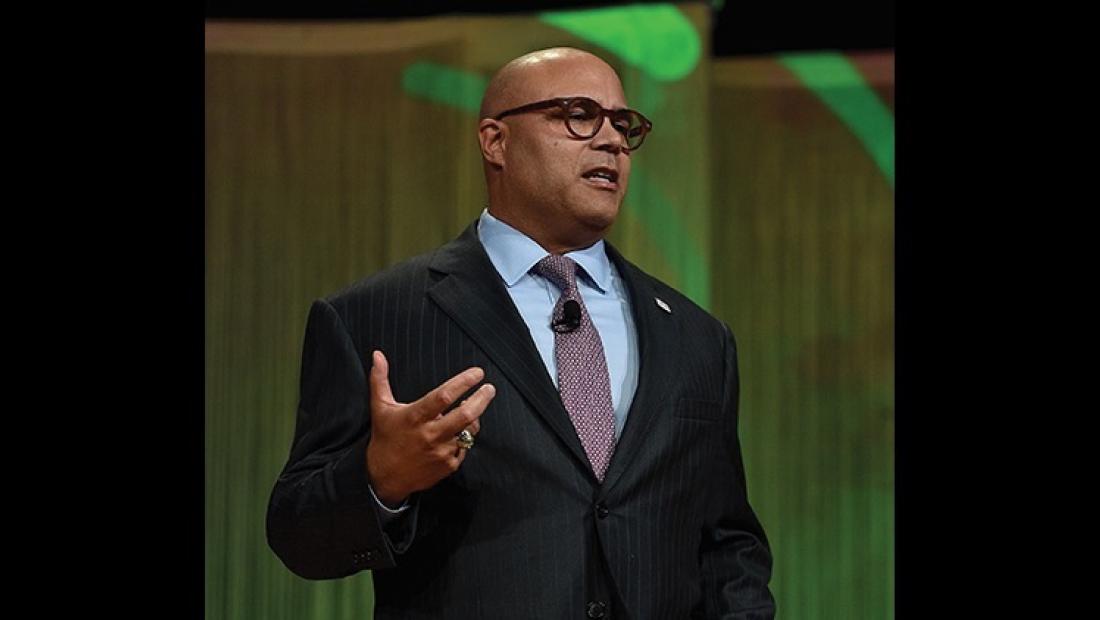Near Future Excites

NCTA President and CEO Michael Powell kicked off the first Near Future “unconference” with speakers and demos to underscore the industry’s role in delivering an array of next-generation digital services.
The forum, an invite-only event produced by NCTA (the Internet and Television Association) and CableLabs, drew decision-makers from Congress, regulation, media, and technology, and was meant to show how cable’s broadband platform is the conduit that runs through the latest innovations in society.
Set in Union Market in Washington, DC, the site of the original 1930s Union Terminal Market, the event featured a rich array of TED-Talk-style speakers who, in some cases, gave jaw-dropping examples of technology – including a live discussion with a holographic Holocaust survivor – amid demo booths featuring virtual reality, augmented reality and artificial intelligence.
Related: Charter's Rutledge Reelected NCTA Chair
The production was largely for the benefit of policy makers, who typically make “reactionary” decisions based on the past rather than future innovations, Powell said, and to help “eliminate barriers to realizing the full potential of these developments.” Rather than a day of “pontificating policy panels,” he said, the agenda showcased demos and entrepreneurs who are using the power of cable’s gigabit platforms “to transform how we live, learn, work and play.” The not-so-subtle message: don’t shackle us with outdated rules.
In many ways, the industry is rightly trying to claim more credit for the creation of the internet, which would not exist without a constantly upgraded broadband network of hybrid fiber-coax that the early pole-climbers strung across the country.
“If you think about what is built on top of the network– everything we’ve shown here today, it’s absolutely incredible,” said Phil McKinney, president and CEO of CableLabs. “And it wouldn’t be able to operate without our network.”
Related: NCTA: V2V Proposal Is Straying Into FCC's Lane
One exhibit, Somniac’s Birdly, a VR flight simulator, allowed attendees to “fly” above New York City, using their arms as wings.
Dirck Schou Jr., the cofounder of Taqtile HoloMaps, gave a stunning display of “holomaps,” large 3-D maps of entire cities in granular detail, not unlike the scenes of battle strategy fromStar Warsand other sci-fi movies. Overlaid on the maps are data such as weather, geo-based Tweets and other public data mined by giant servers.
Google VR senior engineer Paul Debevec , an adjunct professor at USC, gave a demonstration of augmented reality and how engineers can now digitize people, down to the level of facial expressions and skin pores. The digital trickery is so convincing, the film industry often now uses digital stunt doubles. (The software allowed producers to finish the Furious 7 film after actor Paul Walker died in mid-filming.)
Mayo Clinic executive and emergency physician Wyatt Decker showed how data mining, advanced genomics and 3D print modeling is saving lives. One case that brought thunderous applause was a clear plastic 3D model of a patient’s liver with large red blobs of cancer inside. The model allowed doctors to practice the unimaginably delicate surgery over and over so the actual surgery, which saved the man’s life, allowed doctors to finish in a fraction of the time.
Broadcasting & Cable Newsletter
The smarter way to stay on top of broadcasting and cable industry. Sign up below
Jessika is an analyst for TVREV and Fabric Media. She previously served in various roles at Broadcasting + Cable, Multichannel News and NextTV, working with the brands since 2013. A graduate of USC Annenberg, Jessika has edited and reported on a variety of subjects in the media and entertainment space, including profiles on industry leaders and breaking news.



